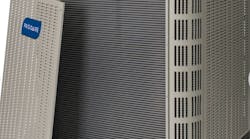"I didn't get there by wishing for it or hoping for it..."
-Estee Lauder
It is estimated there are 1.3 million people employed in the HVACR and water heating industry in North America. Of that number, more than half work in the field as technicians, installers, pipefitters and sheet metal workers and approximately 3 percent are women. During the next 10 years, it is expected that 83,000 field workers will need to be added to replace those retiring and to sustain a projected 34 percent industry growth. With the constraints on the available workforce, the career opportunities for women are excellent throughout the industry.
The creation of the HVACR Workforce Development Foundation was intended to find solutions to the workforce problem for our industry. Unfortunately, the problem is not unique to our industry, because it will affect every segment of the economy. The overall problem is one of full employment. At face value, that would seem to be a good problem, with everyone having work, but actually it's just the opposite. In the near future, there will be insufficient workers to replace retiring workers or those that we will need to continue economic growth.
The problem has multiple causes. The first is the retirement of the “baby boomer” generation. In the next few years, 78 million people born between 1946 and 1964 will retire and move from being producers to being dependents. The second problem is there will be only 45 million people to replace them in the workforce. The “baby boomer” generation is the first in history that failed to have enough children to replace themselves, and that situation is continuing with later generations. Third, there is an increasing life expectancy, which adds to the lopsided percentage of the population that is unable to work and produce. And fourth, we have the failure of our public education system to educate the incoming generations of potential workers. Today, approximately 7,000 students a day (30 percent to 50 percent in some communities) are dropping out of school, and in many cases even those who are graduating are unprepared for the jobs ahead. This all leads to a zero sum labor market where there will be insufficient qualified workers to grow or even sustain our economy.
The proposed solutions to this potentially devastating situation are, first, to get the dropout rate from secondary education reduced to single digits. Then, we need to realign school curriculums to meet the needs of future job markets. Lastly, we must raise the educational achievements of graduates. Passing unqualified students to make school districts look good to get more funding is dumbing down the system. Graduates must leave secondary school with the basic skills so they can obtain further training and education to become productive workers and to replace those retiring.
All of the above will hopefully confirm the critical need for women to consider careers in HVACR. The opportunities abound for those with the skills and training to excel. The impending shortage of technicians in a critical industry like HVACR alone opens the door of opportunity for talented individuals and promises access to jobs and salaries never seen before. We will never send HVACR jobs off shore; it will always be essential to the environment and the economy. Aside from the comfort essentials of residential markets, there will always be highly compensated careers in the commercial sector as well, dealing with hospitals, research, food preservation, energy efficiency and conservation.
A number of traits and skills are beneficial to those considering HVACR as a career. Analytical thinking, problem solving, multi-tasking, persistence, initiative, self-motivation, mechanical aptitude and attention to detail are a few. Any would lead to a well-paid job in the industry, whether in the field, marketing, sales, engineering, research, logistics or manufacturing.
If you are interested, check out the Foundation website at www.careersinhvacr.org or Women in HVACR at www.womeninhvacr.org.
Ciao baby,
Don Frendberg
Don Frendberg is executive director of the HVACR Workforce Development Foundation and president of Phase 3 Insights.
Contact him at 614/208-6801 or [email protected].







